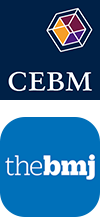



Leading up to Evidence Live 2016, we will be publishing a series of blog posts highlighting projects, initiatives and innovative ideas from future leaders in evidence based medicine.
Please read on for the second in the series from Sarah Wieten, Ph.D. candidate from Durham University.
If you are interested in submitting a blog post, please contact alice.rollinson@phc.ox.ac.uk. Stay tuned!

What is the role of expertise in evidence-based medicine? For part of the movement’s history, expertise was taken as a component of authority-based medicine, the status quo that EBM aimed to replace. However, more recently EBM has embraced the importance of expertise and suggested three possible models for its use in medical research and practice.
An especially important improvement of EBM is the most recent EBM model of expertise. This third model of expertise that debuted in an article by Haynes et al. (2002) keeps the structure of interlocking rings of influence for different EBM components included in previous models, but adds an additional component and shifts the role for expertise. In this model, three main interlocking rings are labeled “Patients’ Preferences and Actions,” “Research Evidence,” and “Clinical State and Circumstances.” Additionally, a fourth component, “Clinical Expertise,” overlies the other three components, holding them together. Haynes et al. write of clinical expertise, “Clinical expertise includes the general basic skills of clinical practice as well as the experience of the individual practitioner. Clinical expertise must encompass and balance the patient’s clinical state and circumstances, relevant research evidence, and the patient’s preferences and actions if a successful and satisfying result is to occur.” (Haynes et al., 2002). This model of expertise emphasizes an external-to-evidence role for expertise, but specifies that the role of expertise is the bringing together of other factors, rather than being one of the factors brought together.
While this “newest” conception of expertise in EBM is not very new, the role of expertise in EBM has reemerged as a critical issue for the movement (Greenhalgh et al., 2014). This is an important idea, because translating evidence into better-quality health services will require more than just effort in improving the quality of the evidence produced, although that is a large part of it. It will also require expertise and judgement to pull that evidence together and apply that evidence to particular patients. It was not always clear that EBM has understood this additional need over and above improved evidence (EBMWG, 1992), but this model provides a good start for thinking about clinical expertise in EBM.
References:
Evidence-Based Medicine Working Group. 1992. “Evidence-based medicine: A new approach to teaching the practice of medicine.” JAMA. 268(17):2420-5.
Greenhalgh Trish, Howick Jeremy, Maskrey Neal. (2014) Evidence based medicine: a movement in crisis? BMJ; 348: g3725.
Haynes, R. Brian, Devereaux, P.J., and Gordon H. Guyatt. 2002. Clinical expertise in the era of evidence-based medicine and patient choice. Evid Based Med;7:36.